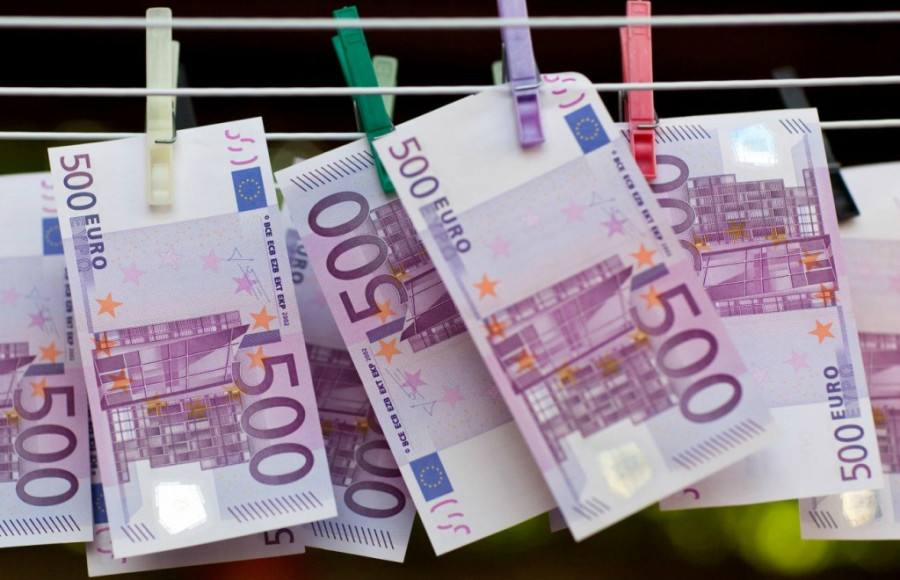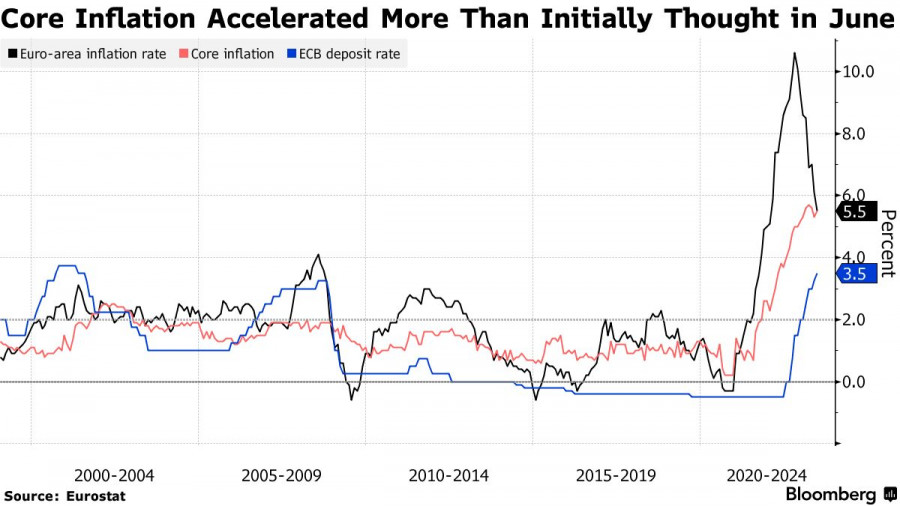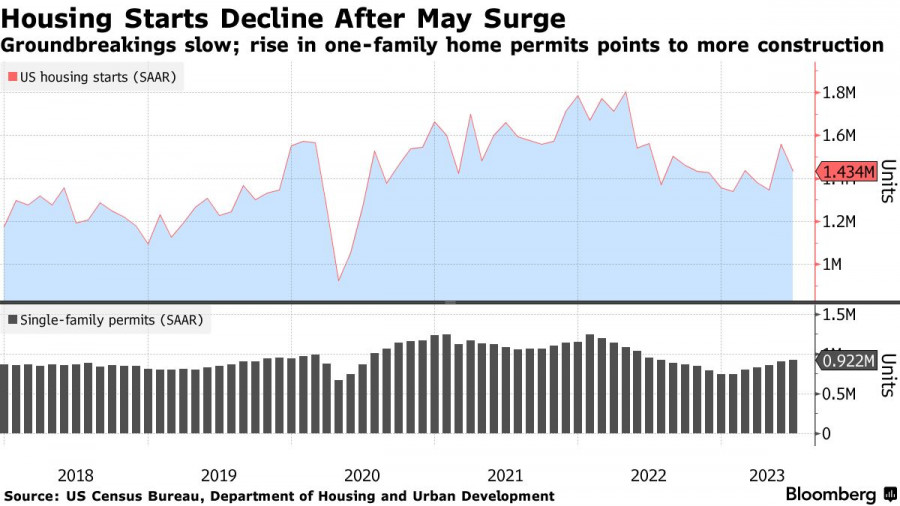
Yesterday, traders responded cautiously to the inflation data in the Eurozone and the US construction market.
According to the report, core inflation in the Eurozone, a key price growth indicator for the European Central Bank, continued to rise after a one-month decline and accelerated more than initially reported in June. This solidified expectations of an interest rate hike by the European regulator next week. Based on Eurostat data, core consumer prices, excluding volatile categories such as food and energy, rose by 5.5% compared to last year. The main inflation gauge declined to 5.5%, fully aligning with economists' forecasts.

As inflation has nearly halved from its peak of 10.6% in October last year, officials are now focusing on a narrower indicator that remains strong and resistant to decline. This gives further support to the ECB hawks, who seek to continue raising rates in autumn, as many policymakers have recently adopted a softer tone.
Speaking on Tuesday, the head of the Dutch central bank, Klaas Knot, suggested that core inflation appeared to have "plateaued," presenting a possibility, but not a certainty, of any rate-related actions after the July meeting. ECB Vice President Luis de Guindos previously expressed some optimism that core inflation might reach its peak. However, neither a plateau nor a peak has been reached yet. Most likely, sustained core inflation that persists throughout the summer will dominate debates and push the ECB towards another rate hike in September, reaching 4%. This certainly helps the euro stay afloat, maintaining good prospects for further growth against the US dollar.

The key moment for the ECB will be the meeting on July 26-27, as it needs to set the right tone for its future intentions, which will be a significant challenge.
Regarding the US data from yesterday, the volume of new home construction in the US continues to decline after a month of growth. While this does not directly indicate signs of a recession, in the context of high borrowing costs, it is essential to pay close attention to such indicators. According to official data published on Wednesday, housing starts fell by 8% to 1.43 million annually last month. Economists' average estimate was 1.48 million.
Building permits also declined by 3.7% to 1.44 million annually. However, the number of single-family building permits reached a yearly high.

Experts note that despite the high cost of borrowing, limited supply combined with incentives for builders has increased buyers' interest in new homes. This strengthens earning prospects for developers, whose confidence continues to grow.
Regarding the EUR/USD pair, bulls need to settle the price above 1.1230. This may drag the pair to 1.1275 and 1.1310. From there, it might further reach 1.1350, but without strong eurozone statistics, this might be challenging. If the pair declines, major buyers may act near 1.1190. If no significant activity occurs there, it would be wise to wait for a further decline to the low of 1.1140 or open long positions from 1.1090.
As for the GBP/USD pair, demand for the pound is diminishing rapidly. One can anticipate a rise in the pair after gaining control above the level of 1.2960, as a return to this level will strengthen hopes for a recovery to 1.3030, which may lead to a surge to 1.3085. In case of further decline in the pair, bears will attempt to take control below 1.2870. If they succeed, this may blow bullish positions and push the pair to 1.2800 and 1.2760.